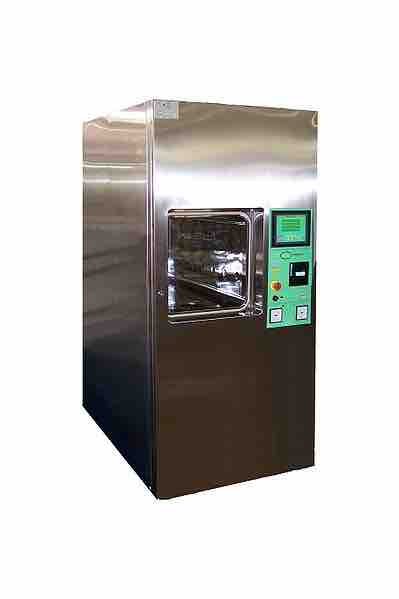Applying heat to bacterial media and utensils in research and the medical field as well as to sterilize food is one of the most common methods for control of bacterial growth. To achieve sterilization, different techniques and tools are used.
Moist Heat Sterilization
Moist heat causes destruction of micro-organisms by denaturation of macromolecules, primarily proteins. Autoclaving (pressure cooking) is a very common method for moist sterilization. It is effective in killing fungi, bacteria, spores, and viruses but does not necessarily eliminate prions. When sterilizing in this way, samples are placed into a steam chamber. The chamber is closed and heated so that steam forces air out of the vents or exhausts . Pressure is then applied so that the interior temperature reaches 121°C. This temperature is maintained for between 15 and 30 minutes. This elevated temperature and pressure is sufficient to sterilize samples of any commonly encountered microbes or spores. The chamber is then allowed to cool slowly or by passive heat dissipation. Pressure sterilization is the prevailing method used for medical sterilization of heat-resistant tools. It is also used for sterilization of materials for microbiology and other fields calling for aseptic technique. To facilitate efficient sterilization by steam and pressure, there are several methods of verification and indication used; these include color-changing indicator tapes and biological indicators. For any method of moist heat sterilization, it is common to use biological indicators as a means of validation and confirmation. When using biological indicators, samples containing spores of heat-resistant microbes such as Geobacillus stearothermophilis are sterilized alongside a standard load, and are then incubated in sterile media (often contained within the sample in a glass ampoule to be broken after sterilization). A color change in the media (indicating acid production by bacteria; requires the medium to be formulated for this purpose) or the appearance of turbidity (cloudiness indicating light scattering by bacterial cells) indicates that sterilization was not achieved and the sterilization cycle may need revision or improvement. Other moist methods are boiling samples for certain period of time and Tyndallisation. Boiling is not efficient in eliminating spores. Tyndallisation inactivates spores as well, but is a more lengthy process.

Autoclave
Large autoclave used for moist sterilization of media and equipment
Dry Heat Sterilization
Dry heat destroys microorganisms by causing coagulation of proteins. The dry heat sterilization process is accomplished by conduction; that is where heat is absorbed by the exterior surface of an item and then passed inward to the next layer. Eventually, the entire item reaches the proper temperature needed to achieve sterilization. The time and temperature for dry heat sterilization is 160°C for 2 hours or 170°C for 1 hour. Instruments should be dry before sterilization since water will interfere with the process. Other heat sterilization methods include flaming and incineration. Flaming is commonly used to sterilize small equipment used to manipulate bacteria aseptically. Leaving transfer loops in the flame of a Bunsen burner or alcohol lamp until it glows red ensures that any infectious agent gets inactivated. This is commonly used for small metal or glass objects, but not for large objects (see Incineration below). However, during the initial heating infectious material may be "sprayed" from the wire surface before it is killed, contaminating nearby surfaces and objects. Therefore, special heaters have been developed that surround the inoculating loop with a heated cage, ensuring that such sprayed material does not further contaminate the area. Another problem is that gas flames may leave residues on the object, e.g. carbon, if the object is not heated enough. A variation on flaming is to dip the object in 70% ethanol (or a higher concentration) and merely touch the object briefly to the Bunsen burner flame, but not hold it in the gas flame. The ethanol will ignite and burn off in a few seconds. 70% ethanol kills many, but not all, bacteria and viruses. It has the advantage that it leaves less residue than a gas flame. This method works well for the glass "hockey stick"-shaped bacteria spreaders. Incineration will also burn any organism to ash. It is used to sanitize medical and other bio hazardous waste before it is discarded with non-hazardous waste.